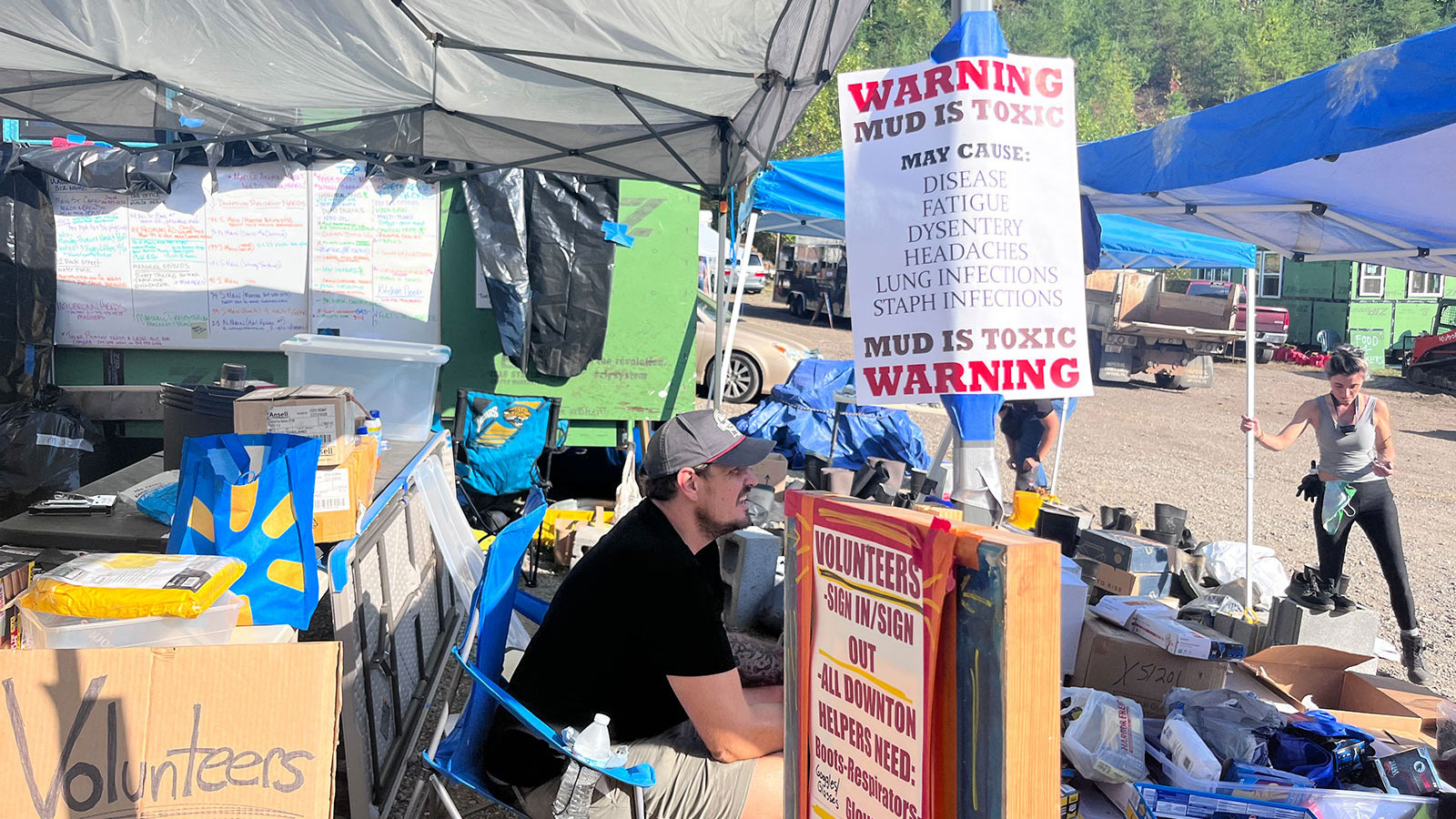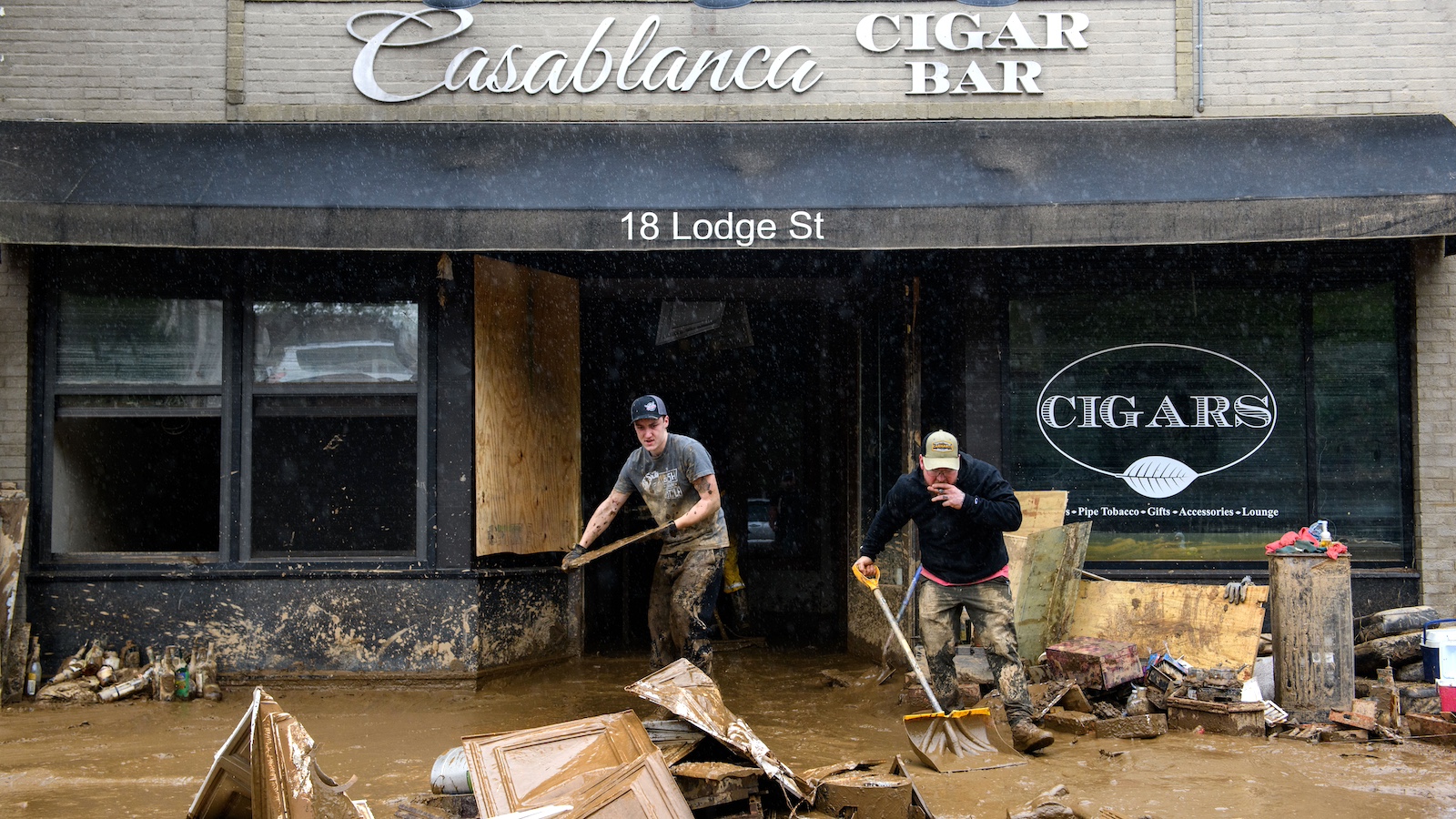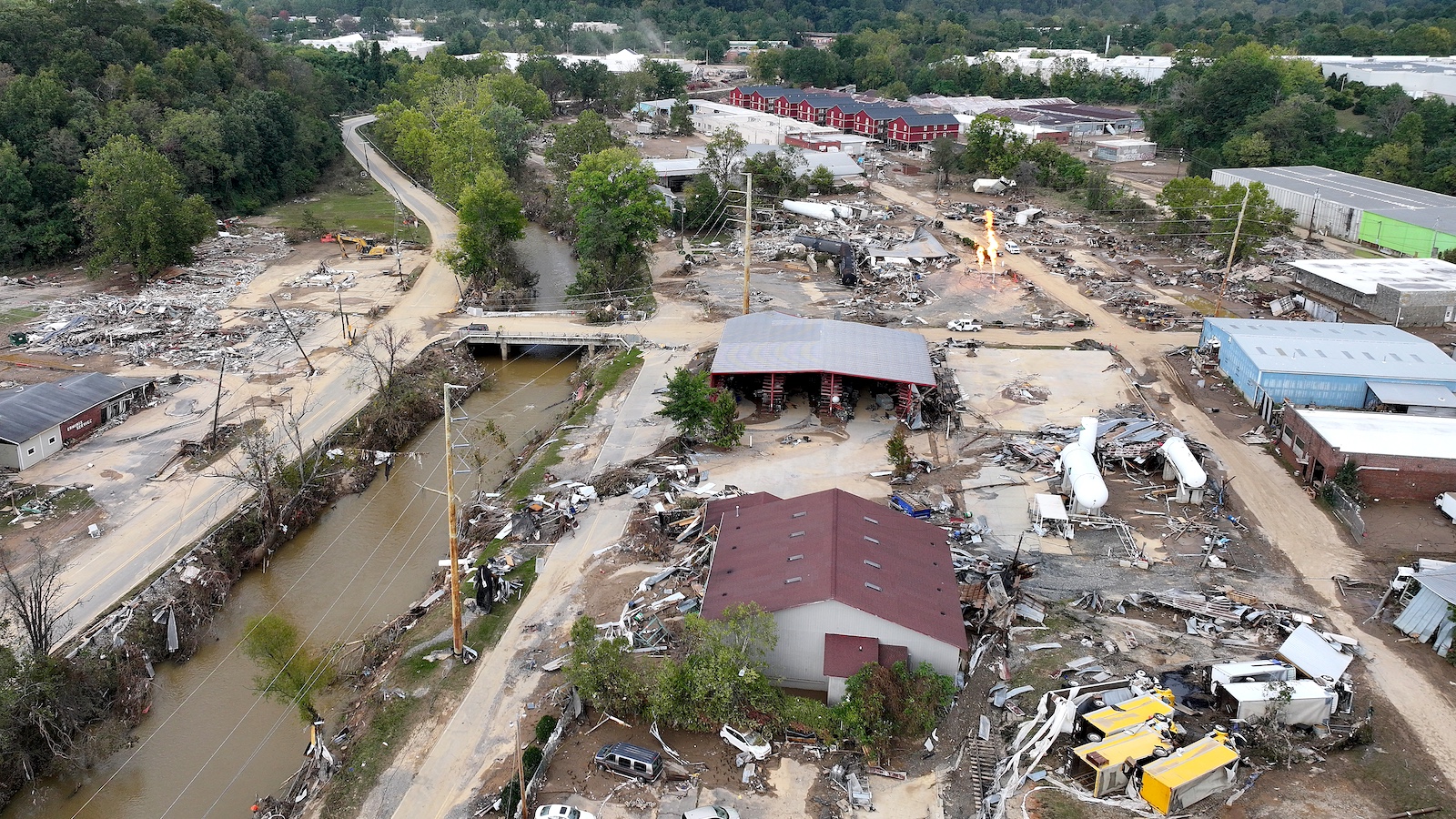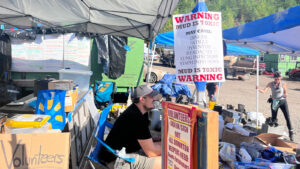
Every day at 10 in the morning, more than a dozen people gather outside Gold’s Gym just south of downtown Asheville, North Carolina. After organizing themselves into groups — Spanish speakers in one, for example, and those with medical skills in another — they grab a few five-gallon buckets each and climb into trucks. Before long, everyone is scurrying off to spend the day performing an essential task: Flushing toilets.
Twenty days after Hurricane Helene brought torrential rains and deadly flooding to western North Carolina, more than 100,000 people still lack potable water. The crisis extends beyond the city to nearby mountain communities of Swannanoa and Black Mountain. Federal and state officials have sent water, but supplies are limited, and as service is restored, locals are being told to boil anything that didn’t come from a bottle. Even as hundreds of thousands of people continue to dig out of the devastation wrought by the storm, the risk of disease is increasing.
That’s how it is with a natural disaster like Helene or Hurricane Milton, which ravaged Florida last week: The immediate injuries and loss of life are inevitably followed by longer-term physical and mental impacts. People across western North Carolina, eastern Tennessee and beyond are beginning to grapple with these secondary effects, compounded by the lack of potable water and the polluted garbage the flood washed across the landscape.
“Even after the water recedes, residents may underestimate the potential for contamination by invisible bacteria such as fecal coliforms, heavy metals such as lead, and organic and inorganic contaminants such as pesticides,” said Jennifer Horney, a disaster epidemiologist at the University of Delaware. warned in the aftermath of the hurricane.
The dozen or so toilet flushers who call themselves the “Flush Brigade” comprise one of several informal volunteer efforts that the people of Asheville rely on to provide a basic level of sanitation. With the city’s water system knocked out by the floods and repairs expected to take weeks or more, residents found themselves unable to shower or even flush their toilets. Although municipal water is beginning to flow back to the city, it is highly chlorinated and filled with sediment.
People from the community nonprofit BeLoved Asheville started the Flush Brigade with help from a largely ad hoc group of water providers calling themselves Flush AVL. All work out of a downtown brewpub, and begin visiting apartment complexes and mobile home parks almost immediately after the storm begins. They are busy all day, every day, and plan to hold on until the Asheville Water Resources Department provides safe water again.
Earlier this week they descended on Aston Park Tower, an 11-storey public housing complex not far from the city centre. Each carried a bucket that flushed with water as they crowded into elevators. Besides helping people with a task that most people take for granted, the volunteers look after the well-being of the elderly, those with disabilities and the homebound. Many of these good Samaritans are nurses, and they expressed concern that the lack of sanitation could cause diseases such as dysentery. For all the good that an organization like The Flush Brigade does, the need far exceeds anyone’s ability to meet it. The devastation is simply too great.
“I can’t go in and clean someone’s room,” said one volunteer, a nurse who identified himself only as Norman. “I’m here to clean a wound. I can help take care of their person, but as far as where they live, their health is still at risk. But we are not equipped to go in and mop someone’s bathroom.”
Such restrictions are evident in towns along the French Broad River, where residents complain of the foul, landfill-like smell that has permeated the air as soil saturated with floodwaters containing an unknown combination of chemicals and sewage dries and turns to dust. It doesn’t help that residents feel they are receiving confusing information about public health.

Melissa Sue Gerrits/Getty Images
“We put on these suits because the mud is toxic,” said Oren McClure, who wore a Tyvek suit, goggles and boots as he went downtown with his friend Isaiah Embler to help clean up. “There’s like chemicals and human waste in there, and we don’t want all that to get on us.” Local officials are still testing soil samples to determine what might be in them, and official advice is still in place treat the mud as dangerous.
Growing up here, Embler never trusted the river at first, mostly because the town is downstream from the Woodfin Sewage Plant. “All my life I’ve been told not to swim in the French Broad because of that reason,” he said. “It just doesn’t help it at all.”
He is right to be concerned. The state Department of Environmental Quality received more than 1,000 reports of potentially alarming incidents in the wake of Helene: – oil drums leaking into dams, homeowners pumping accumulated sewage into creeks, wastewater treatment plans critically damaged by the flood. Weeks after the storm, public health departments across the state continue to warn residents to test their wells and to boil or bleach their water. They also told people not to drink from rivers and streams or use that water for cooking, or even to wash their hands. State and local health departments provide water testing kits to anyone who asks for them, and encourage people to disinfect wells and test them for fecal material and other contaminants. In some cases, health officials make it very clear that the water is not safe.
“This water is not drinkable, even if you boil it,” the town of Black Mountain, outside Asheville, says on its website. “It may NOT BE USED for anything other than flushing toilets.”
Nationwide, the official death toll from Helene stands at 125, with 92 people still missing. More than 2,000 households are still without power, and more than 600 roads remain closed. Against that backdrop, state and local officials are still engaged in search and recovery operations and scrambling to provide basic assistance. With all that’s happening, people in Asheville and beyond said the public health advisory they received was difficult to parse.
“We haven’t gotten a lot of information from up there, so we’re just playing it by ear,” said Amos McGregor, who owns a record store in downtown Marshall, 30 minutes north of Asheville, which was flooded.
When extreme weather brings flooding, the overflow flows into sewage plants, farms and all manner of industrial operations, washing its contents across the landscape and into wells and water systems. That’s why public health officials in several counties throughout North Carolina and other states ravaged by Helene are strongly urging residents not to touch local waterways.
Flooded sewers always produce some overflow. The sewage mixes in creeks, manholes and wells, producing a dangerous soup of bacteria. Highly contagious diseases such as cholera, salmonella and Norovirus can thrive in such conditions; all these diseases can cause diarrhoea, vomiting and dehydration which can seriously ill and even kill the immunocompromised, the elderly and the very young.

Mario Tama/Getty Images
Hurricanes and the floods that accompany them not only cause gastrointestinal illness, they produce large amounts of dust, silt and mold that pose another health risk. “People are suffering at higher rates from some physical conditions, including upper respiratory infections, asthma exacerbations and allergies,” said Timothy William Collins, a disaster and health researcher at the University of Utah.
The medical and public health communities have long known that natural disasters exacerbated by climate change can continue to claim lives long after the immediate crisis has passed. They saw it in Bangladesh, where it flooded earlier this year overwhelming sewage systems and sent the waterborne bacterial cholera into the water supply. In the Americas, the mosquito-borne disease dengue fever afflicted millions of people in 2022 and 2023a spike health researchers attribute to flooding exacerbated by climate change.
Given all that, Helene’s final tally is sure to rise, but if the past is any indication, even the official tally may not reflect the storm’s true cost. When Hurricane Maria hit Puerto Rico in 2017, the government initially reported 64 deaths. A year later, an analysis examining how many people would have died in the months after the storm had it not hit the archipelago found that the Category 4 cyclone actually killed over 3,000 people.
Medical volunteers and epidemiologists on the ground in Asheville and surrounding counties say it’s too soon to say what the most worrisome diseases may be, especially since Helene’s impact on communications has blunted data collection. A local doctor who identifies herself only as Dr. Alexander identified, joined Elliott Patterson, a graduate student studying public health at the University of North Carolina-Chapel Hill who volunteers at field clinics around Asheville. They have seen many people with irritating skin conditions and chronic respiratory conditions, such as asthma, which are likely to be exacerbated by dust. Besides, it’s good like blisters from yellow jacket stitches; poison ivy contracted as he slogged through mud, brush and debris; and communicable diseases such as COVID-19 and the flu that often circulate in shelters. But it’s hard to say for sure where things are trending, they said.
State epidemiologist Zach Moore acknowledged that the interruption of services at emergency rooms and health departments due to loss of power and Internet, not to mention the disruption to their employees’ lives, also hinders data collection. “There are limitations in terms of data for reportable conditions that we track on an individual case basis,” he said, although the state continued to process lab results and receive physician reports.
At this point, only one thing is certain: The people of Asheville and the communities of the Blue Ridge Mountains will be grappling with the health impacts of this storm long after the floodwaters recede and the faucets turn on.





